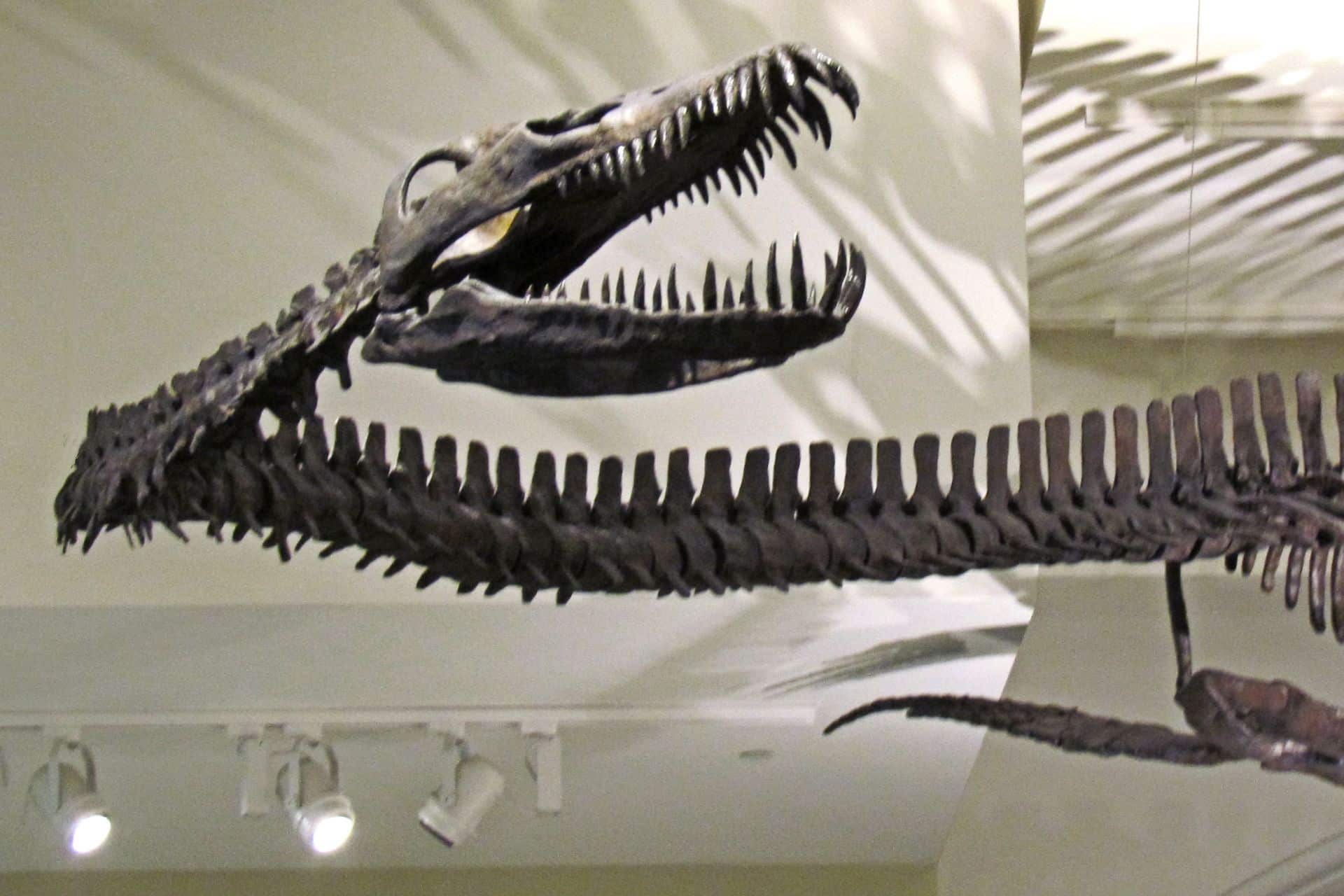

After decades of uncertainty, scientists have finally identified a massive prehistoric sea monster that once roamed the oceans during the time of the dinosaurs. The species, now named Traskasaura sandrae, lived around 85 million years ago and measured nearly 39 feet, 12 meters in length.
Researchers discovered the first major fossil of the creature in 1988 on Vancouver Island in British Columbia, Canada. The skeleton was poorly preserved, but more importantly, was nearly complete.
While the find sparked interest, scientists at the time were unsure whether it belonged to a new species or a known group of long-necked marine reptiles called plesiosaurs.
That mystery persisted for years. Though additional fossils were later uncovered, including a right arm bone and an exceptionally preserved juvenile skeleton, none were complete enough to allow a firm classification.
Now, a new study published May 22 in the Journal of Systematic Palaeontology confirms that the bones represent a distinct species. Led by Professor F. Robin O’Keefe of Marshall University, researchers named the creature Traskasaura sandrae and placed it in a new genus under the Elasmosaur family, a subgroup of plesiosaurs.
“The identity of the animal that left the fossils has remained a mystery,” O’Keefe said in a statement. “Our new research published today finally solves this mystery.”
Scientists have identified a prehistoric sea monster: Traskasaura sandrae, an elasmosaurs with heavy teeth, reaching 39 feet long. Fossils, found since 1988, revealed it had a unique mix of traits, indicating a new genus. Ideal for hunting ammonites. pic.twitter.com/T0F92LZNzN
— Nyra Kraal (@NyraKraal) May 28, 2025
Elasmosaurs, like other plesiosaurs, lived during the Cretaceous period between 145 and 66 million years ago. They were known for their small heads, long necks, and large flippers, which allowed them to move gracefully through ancient seas.
Though they resembled fish, they breathed air and likely surfaced often, much like modern whales and dolphins.
The juvenile specimen was key to the breakthrough. It revealed several distinctive features. “It has a very odd mix of primitive and derived traits; the shoulder, in particular, is unlike any other plesiosaur I have ever seen,” said O’Keefe.
The new species is believed to have had at least 50 neck vertebrae. Scientists say this likely helped it efficiently dive, possibly attacking prey from above. Its strong teeth suggest it fed on hard-shelled marine creatures.
The ammonite mollusks are a “good candidate—due to Traskasaura’s robust teeth, ideal, possibly, for crushing ammonite shells,” O’Keefe said.
At first, O’Keefe believed the fossils might be related to plesiosaurs found in Antarctica. “My Chilean colleague Rodrigo Otero thought differently, and he was right; Traskasaura is a strange, convergently evolved, fascinating beast,” O’Keefe said.
The discovery not only solves a decades-old mystery but adds a new chapter to the understanding of marine reptiles. With Traskasaura now formally classified, scientists have expanded the tree of life that once thrived beneath the waves, offering new insight into how these ancient predators lived, evolved, and survived in Earth’s prehistoric oceans.
